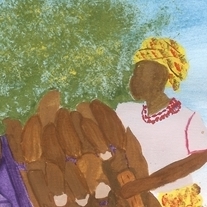 (Aggregated for Studies 1, 2a and 2b)
(Aggregated for Studies 1, 2a and 2b)
What's eating farm yields?
Across most of the farming systems, abiotic and management constraints accounted for most of the yield loss for wheat; for rice and cassava, socio-economic and management constraints dominated; for sorghum, abiotic constraints were most severe; and for chickpea and cowpea, biotic constraints dictated yield loss. Though differences existed amongst crops and farming systems, on the whole, each of the four constraint types contributed roughly equally to total yield losses.
What can we do now?
Many of the solutions proposed concerning wheat and rice constraints revolved around the creation of germplasm with tolerance or resistance to various pests, diseases and water stresses. For crops such as sorghum, cowpeas, cassava and chickpea, the constraints tend to be quite diverse yet more interlinked. This suggests a multi-faceted approach is required combining, among others, improved germplasm with input availability, credit accessibility, and training and extension programmes.
Maximising objectivity and impact
Not only do these studies pinpoint geographical areas and crops of importance, they also illustrate the newfound ability to make objective and sound investment decisions based on solid empirical evidence. Where a decade ago, data and computing limitations prevented such efforts, today’s technological prowess can guarantee agricultural research funds are targeted where they are most needed, and where they will have the largest impact.
Next steps, a collaborative approach
Most of all, these studies emphasises the need for collaborative inter-disciplinary and cross-institutional efforts. One simple intervention will not suffice in curing the ills facing farmers in today’s developing world. Thus, GCP and other institutes in a position to guide crop improvement research must use these findings to focus future efforts on areas where the greatest impact can be made on those who are most in need.
